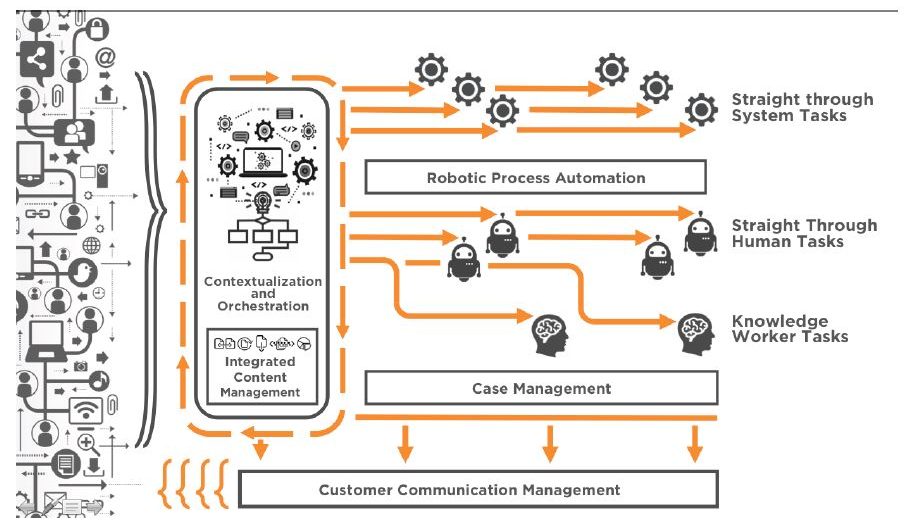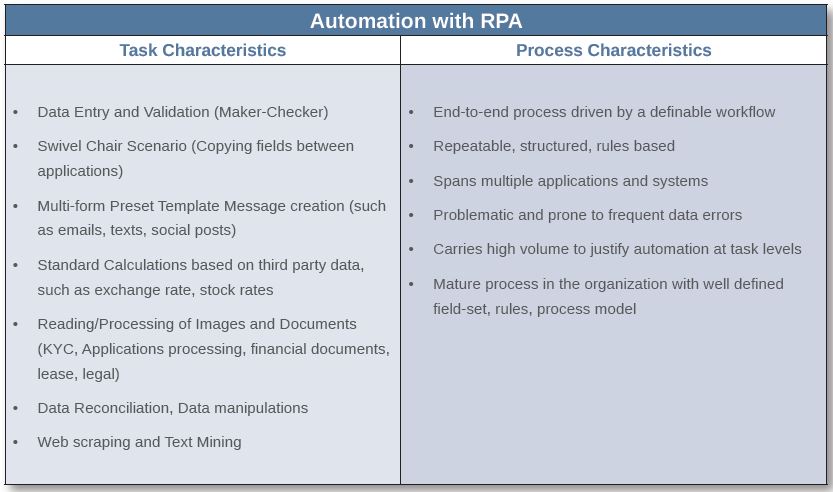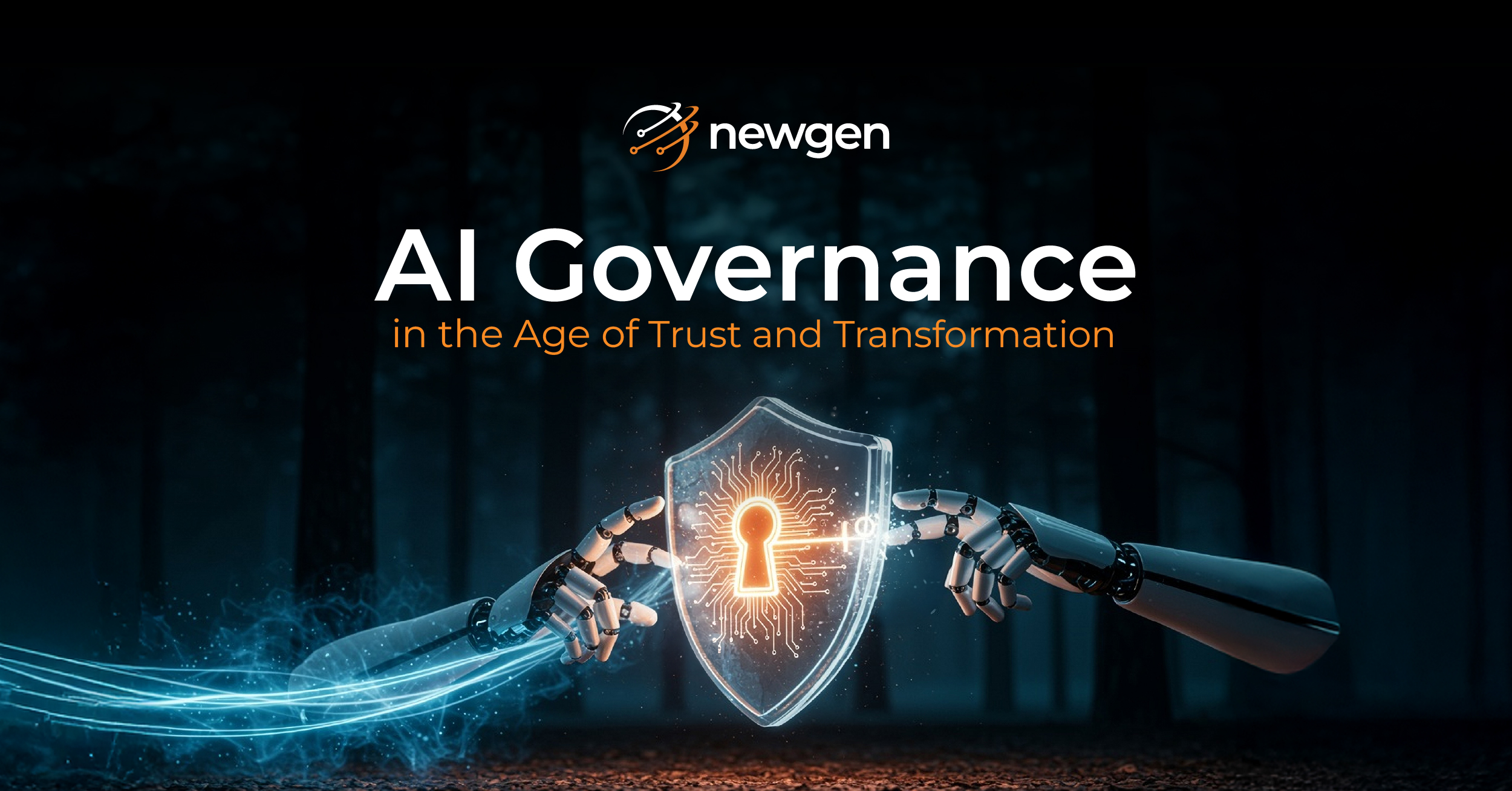What is Robotic Process Automation (RPA)
Robotic Process Automation is the last mile task automation of human tasks in Process Automation. Parallel, sequential or tasks at any level (mundane) can be completely automated with robotic process automation, allowing knowledge workers to participate in more constructive processes.

Depending on whom you talk to, Robotic Process Automation (RPA) may sound like a lot of hype or very real. RPA is getting plenty of attention among process folks – particularly those looking for further means to automate those aspects of processes that are handled by people. But, what really is RPA? In order to answer that clearly, we would need to go beyond the definitions and specifically look at characteristics of RPA.
Robotic Process Automation for Digital Transformation
- Robotic Process Automation (RPA) is typically used in conjunction with automating the routine and repetitive tasks that are otherwise performed by Knowledge Workers
- Robots, in RPA parlance, perform interactions with systems and applications in the same way that humans normally do. In other words, these robots mimic human behavior while performing these tasks
- These robotic software can execute as part of a broader process
- These robots are softwares/algorithms/programs that execute tasks based on certain rule-set, automation or orchestration model, and as per an assigned role as part of a business process
- These robots can be configured and modeled (trained) to behave in a manner, albeit faster and without having to rest or take leave of absence
- The tasks performed by these robots are typically in scope of a PC or a machine. This automation operates in the scope of the local machine, albeit orchestrated and controlled centrally and performed at scale. These robots work with existing IT infrastructure.
Where does RPA fit in Business Process Management (BPM)?
Let’s take a typical business process. There are three types of tasks or operations that are performed by various participants of the process.
System Tasks
Tasks that are handed off to a system or application by/through an API or a web service integration. Typically, a workflow is configured with these tasks as system task in these cases.
Knowledge Worker Tasks
Tasks that are performed by humans. They are assigned the task, which they perform either directly on the workflow task screen or perform elsewhere and then through any mechanism, confirm having performed it.
Mundane Human Tasks
These are the tasks that are important enough to be performed by certain roles but still repetitive or mundane to make it seem like a waste of human energy. These are the candidates for RPA.
A typical BPM effort involves straight-through intelligent process automation of tasks that need to be handed over to the systems or applications. Typically, knowledge workers end up performing numerous repetitive and mundane activities that can actually be automated. There are many reasons the current systems are inadequate for such automation. Examples of such scenarios are dual data-entry, swivel chair scenarios for data transfer and some of the mundane approval operations. Such tasks take up a sizeable amount of time from knowledge workers who are otherwise supposed to be doing the “unstructured thinking” and “exception handling”. RPA attempts to resolve “just that” problem.

Automated Human Tasks in a BPM scenario handled with RPA
RPA frees up the bandwidth of knowledge workers and allows for more efficient way of performing those repetitive mundane tasks. So, in essence, RPA is the last mile task automation of human tasks in Process Automation.
Where can you leverage RPA?
There are certain general characteristics of situations (processes, places, functions) where you can leverage RPA to create the promised business value. We talked about certain prerequisites, and those prerequisites in fact also drive some of the patterns that should reflect in an organizational process or set of task before an RPA based implementation can be considered. Typically, any customer facing (or business value driven) end-to-end process spanning multiple systems and applications with scale is a good candidate.

Maximizing the value from RPA
Organizations have been trying to leverage RPA in various situations, especially in voluminous setups such as Business Process Outsourcing (BPOs), or Shared Services Centers (SSCs). Typically, one would expect that such last mile automation activities are supported by a central business process orchestration platform, but enterprises are also sometimes looking at optimizing the worker performance independent of process management efforts, such as in ERP and core domain applications. In order for an effective leverage of RPA, however, the following considerations are important:
RPA is in essence a Process exercise
RPA holds tremendous promise, however, organizations have to look at RPA as a “part of the solution” and not the end in itself. It may look like an extension of an underlying ERP in some cases. Pasting an RPA implementation on top of an ERP that has its own legacy and hardwiring issues would not yield the intended benefits. An effective RPA implementation works in conjunction with a robust BPM platform that supports structured as well as unstructured processes.
BPM Platform is critical prerequisite for RPA
Without an effective BPM platform, an RPA implementation would be like town exits without an interstate freeway. Process orchestration at the business unit level is what drives the overall business value, while RPA implementation at the tasks level, supported by the orchestration and modeling platform, gives the incremental leverage that it promises.
RPA is a perfect foil for effective Case Management
Considering that RPA is primarily targeted to free up the knowledge workers resources to allow them to focus on the real knowledge work, it is critical to have a process solution that allows such work to happen in a well defined manner. BPM platform needs to have Case Management functionality to allow for the execution of unstructured tasks and processes in conjunction with automated and structured parts of the processes. The key here is the support for unstructured processes and a strong capability for handling exceptional scenarios through decision making driven by knowledge workers.
Hidden advantage of Document Management in the context of RPA
Most of the prominent candidate processes of RPA happen to be documents intensive. In order for the robots to be able to focus on the core functionality of getting through the tasks, you need to have a document management capability in place for basic functionality of documents retrieval, the document type identification, auto field capture and so on.
Imaging is one of the key leverage points for RPA
Most processes today involve images, and the trend is increasing by the day. An imagine solution natively capable of performing basic enhancements, processing and field capture is again very important. This is especially critical where people are being used to extract information from images and translate them into application data.
Straight-through processing and integration is key
This goes without saying. However, it is the most critical aspect of RPA, without which any implementation would be a replica of human swivel chair scenario. The process platform should have the capability to integrate with various systems as well
as to allow for smooth passage of data from systems to robots and vice-versa and to process platform, in order for the process to work seamlessly.
Finally, what benefits can organizations expect from RPA?
As mentioned earlier, RPA is a last mile automation of tasks. In order to derive a strategic value, you need to have strategic business process management pieces in place. There are various levels of benefits that RPA can provide an organization. A lot of it depends on the maturity of business processes and technology leverage.
Lower Cost through reduced requirement of operational manpower, specifically in high-scale operations is one of the foremost advantages of RPA. RPA also ensures greater work quality and throughput, higher control and flexibility and happier knowledge workers. And all this eventually leads to happier customers!
You might be interested in




